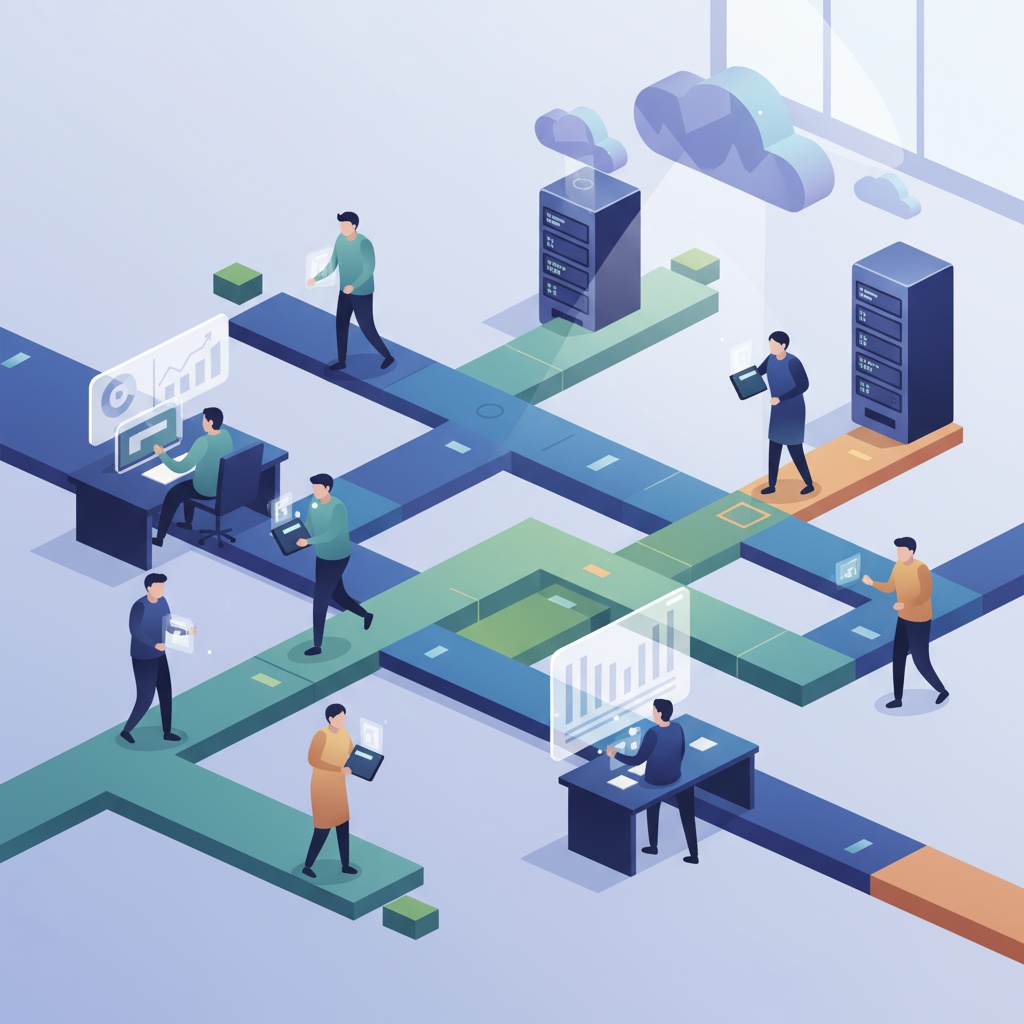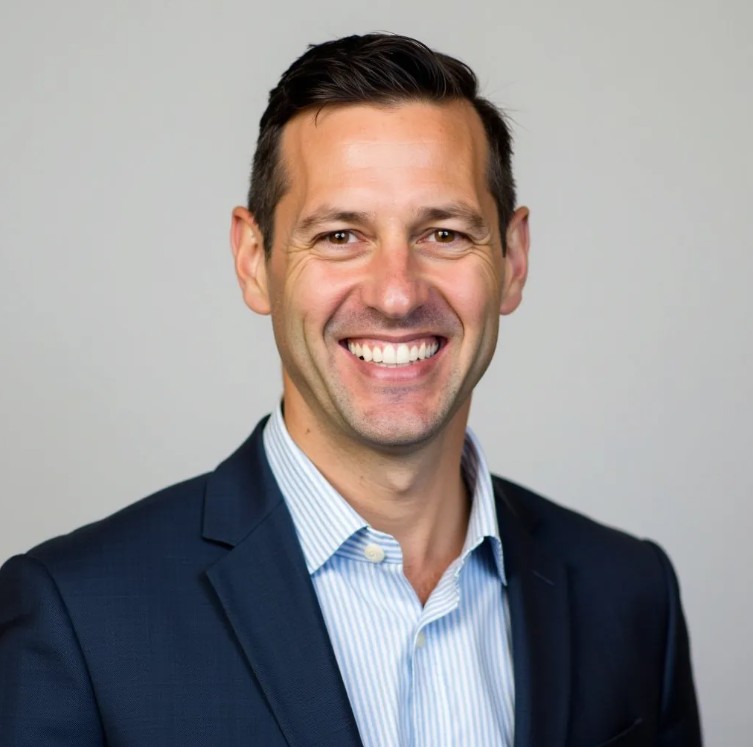
How JAFZA’s Port and Infrastructure Turn Business Challenges Into Competitive Advantages
Reading time: 12 minutes
Ever wondered why some of the world’s most ambitious companies choose Dubai’s Jebel Ali Free Zone (JAFZA) as their Middle Eastern headquarters? The answer isn’t just about tax benefits—it’s about infrastructure that actually works for your business.
Let’s cut through the marketing fluff. JAFZA’s port and infrastructure ecosystem represents one of the most sophisticated business enablement platforms in the global trade landscape. We’re talking about real competitive advantages: reduced logistics costs, faster market access, and operational efficiencies that can transform your bottom line.
Table of Contents
- Why Infrastructure Makes or Breaks International Business
- The Jebel Ali Port Advantage: Beyond Container Handling
- Multi-Modal Connectivity: Your Supply Chain’s Best Friend
- World-Class Facilities That Scale With Your Ambitions
- Overcoming Common Infrastructure Challenges
- Your Strategic Implementation Roadmap
- Frequently Asked Questions
Why Infrastructure Makes or Breaks International Business
Here’s the straight talk: Infrastructure isn’t just about having a port nearby. It’s about the entire ecosystem that determines whether your product reaches customers efficiently or sits in storage bleeding money.
Consider this scenario: You’re a European manufacturer expanding into Asian markets. Your success hinges on three critical factors—speed to market, cost control, and operational reliability. JAFZA’s infrastructure addresses each of these pain points systematically.
The Real Cost of Poor Infrastructure
According to the World Bank’s Logistics Performance Index, inefficient port operations can add 15-25% to total logistics costs. For businesses operating on slim margins, that’s the difference between profitability and failure.
Key Infrastructure Pain Points JAFZA Solves:
- Port congestion causing unpredictable delays
- Limited connectivity options restricting market reach
- Inadequate warehousing forcing businesses into suboptimal storage solutions
- Technology gaps creating information blind spots in supply chains
- Customs bottlenecks extending clearance times
Well, here’s what makes JAFZA different: integrated thinking. The free zone wasn’t designed piecemeal—it’s a comprehensive ecosystem where port, logistics, technology, and business services work in concert.
Strategic Geographic Positioning
JAFZA sits at a geographic sweet spot, positioning businesses within a 4-hour flight radius of approximately 2 billion consumers across the Middle East, Africa, and South Asia. But geography alone isn’t enough—it’s what you can do with that position that matters.
The zone provides access to markets representing over $8 trillion in combined GDP, with infrastructure built specifically to capitalize on these opportunities.
The Jebel Ali Port Advantage: Beyond Container Handling
Jebel Ali Port isn’t just a port—it’s the largest man-made harbor in the world and the busiest container port in the Middle East, handling 14.1 million TEUs (Twenty-foot Equivalent Units) annually. But numbers only tell part of the story.
Operational Excellence That Translates to Business Value
The port operates with military precision. Average container dwell time—the period cargo sits at the port—stands at just 3.2 days, compared to the regional average of 5-7 days. For businesses, every day saved represents thousands in reduced storage costs and faster inventory turnover.
Real-World Impact: Electronics Distributor Case Study
A European electronics distributor moved their regional distribution center to JAFZA in 2021. The results? Their average time-to-market across GCC countries dropped from 12 days to 4 days. Storage costs decreased by 28%, and they reduced their safety stock requirements by 35% due to improved supply chain predictability. The infrastructure didn’t just support their business—it fundamentally transformed their operational model.
Port Capabilities Breakdown
| Capability | JAFZA Standard | Regional Average | Business Impact |
|---|---|---|---|
| Container Dwell Time | 3.2 days | 5-7 days | Lower storage costs, faster inventory cycles |
| Berth Productivity | 135 moves/hour | 80-100 moves/hour | Reduced vessel waiting times |
| Customs Clearance | 4-6 hours | 24-48 hours | Faster market access, improved cash flow |
| Shipping Line Connections | 120+ direct services | 40-60 services | Greater route flexibility, competitive shipping rates |
| Global Port Connections | 200+ ports | 100-150 ports | Expanded market reach, diverse sourcing options |
Technology Integration at the Port Level
JAFZA hasn’t just invested in cranes and containers—they’ve built a digital infrastructure backbone. The Maqta Port Community System connects all stakeholders in the logistics chain, from shipping lines to customs authorities, creating unprecedented transparency.
Pro Tip: Businesses using the integrated digital platform report 40% reduction in documentation processing time and virtually eliminate data entry errors that can cause costly delays.
Multi-Modal Connectivity: Your Supply Chain’s Best Friend
Quick scenario: Your products arrive at Jebel Ali Port. Now what? This is where most ports leave you to figure it out yourself. JAFZA takes a different approach.
Seamless Transport Options
The zone offers integrated connectivity across all major transport modes:
Maritime Excellence: With berths capable of handling the world’s largest container vessels, including Ultra Large Container Vessels (ULCVs) with 24,000+ TEU capacity, businesses access the most efficient shipping routes without transshipment delays.
Aviation Access: Al Maktoum International Airport sits adjacent to JAFZA, while Dubai International Airport is 40 minutes away. This dual-airport access creates redundancy and options—critical for time-sensitive shipments.
Road Infrastructure: The Emirates Road and Sheikh Mohammed Bin Zayed Road provide direct connections to the entire UAE and neighboring GCC countries. Modern highway systems mean your products can reach any UAE emirate within 2-3 hours.
Rail Future-Proofing: The Etihad Rail project, currently under development, will connect JAFZA directly to Saudi Arabia, Oman, and the broader GCC rail network. This isn’t just about today’s capabilities—it’s about positioning for tomorrow’s opportunities.
Logistics Performance Comparison
Regional Logistics Efficiency Index (Scale: 0-100)
Source: World Bank Logistics Performance Index and internal performance metrics, 2023
World-Class Facilities That Scale With Your Ambitions
Infrastructure isn’t just about what exists outside your warehouse—it’s about the facilities where your business actually operates. JAFZA offers over 6,500 companies access to facilities designed for diverse business needs.
Warehousing Solutions That Adapt
Whether you’re a startup needing 500 square feet or a multinational requiring 500,000 square feet, JAFZA’s facility options scale with your growth trajectory.
Facility Categories:
- Ready-built warehouses: Move-in ready spaces with standard specifications, ideal for businesses needing immediate operations
- Custom-built facilities: Tailored to specific requirements, from cold storage to hazmat-certified buildings
- Light industrial units: Designed for light manufacturing with integrated office space
- Office complexes: Modern workspace for service-based operations
- Labor accommodation: On-zone housing reducing commute times and improving employee satisfaction
Manufacturing Success Story: Automotive Parts Supplier
A Japanese automotive parts manufacturer established their regional hub in JAFZA in 2019. They leveraged a 35,000-square-foot facility with direct port access and just-in-time delivery capabilities. Within 18 months, they expanded to 60,000 square feet and reduced their delivery lead times to regional automotive plants from 14 days to 3 days. The integrated infrastructure allowed them to operate a true just-in-time model, reducing working capital requirements by $2.3 million annually.
Technology and Utilities Infrastructure
The unglamorous stuff that makes everything work: JAFZA provides robust utility infrastructure that businesses often take for granted until it fails.
Power reliability: 99.98% uptime with redundant systems—critical for businesses running temperature-controlled storage or data centers.
Internet connectivity: Multiple fiber optic providers delivering enterprise-grade connectivity with speeds up to 10 Gbps.
Water and waste management: Industrial-grade systems handling everything from standard operations to specialized industrial processes.
Ready to understand why this matters? Power reliability alone prevents the costly disruptions that plague businesses in less developed zones. For a pharmaceutical distributor managing temperature-sensitive inventory, that 99.98% uptime could mean the difference between compliance and catastrophic losses.
Overcoming Common Infrastructure Challenges
Let’s address the elephant in the room: no infrastructure is perfect. But understanding challenges and having solutions ready is what separates successful businesses from struggling ones.
Challenge 1: Scaling During Peak Demand Periods
The Issue: Global shopping events like Black Friday or Ramadan create massive demand spikes. Can infrastructure handle it?
JAFZA’s Solution: The port operates with built-in capacity buffers. During 2022’s peak season, the port processed 23% above average volume without significant delays. The key is predictive planning—JAFZA uses AI-driven forecasting to position resources ahead of demand spikes.
Your Action: Work with JAFZA’s logistics partners to develop seasonal capacity plans. Businesses that plan 60-90 days ahead of peak seasons secure priority handling slots.
Challenge 2: Coordinating Multi-Party Logistics
The Issue: International supply chains involve dozens of stakeholders—shipping lines, freight forwarders, customs, transporters. Coordination nightmares are common.
JAFZA’s Solution: The integrated digital platform creates a single source of truth. All parties access real-time information, reducing miscommunication and enabling proactive problem-solving.
Your Action: Mandate that your logistics partners use JAFZA’s integrated systems. Companies reporting full digital integration see 50% fewer coordination-related delays.
Challenge 3: Adapting to Regulatory Changes
The Issue: Trade regulations, customs procedures, and compliance requirements constantly evolve. Staying current is resource-intensive.
JAFZA’s Solution: The free zone authority provides regular compliance updates and maintains a customer service infrastructure specifically for regulatory guidance. Changes are communicated proactively, not reactively.
Your Action: Establish a direct relationship with JAFZA’s compliance team. Businesses with dedicated compliance contacts report 70% faster adaptation to regulatory changes.
Your Strategic Implementation Roadmap
You’ve seen the capabilities. Now let’s talk about how you actually leverage them. Success isn’t about using every feature—it’s about strategically deploying the right infrastructure elements for your specific business model.
Phase 1: Foundation Building (Months 1-3)
Facility Selection and Setup
- Conduct a facility needs assessment based on 24-month growth projections
- Secure appropriate warehouse or office space with expansion clauses
- Establish relationships with JAFZA’s logistics service providers
- Set up digital system integrations with port and customs platforms
Key Metric to Track: Time from arrival to shelf-ready (target: under 48 hours for standard goods)
Phase 2: Operational Optimization (Months 4-9)
Supply Chain Fine-Tuning
- Analyze actual logistics performance against projections
- Identify bottlenecks in your specific supply chain
- Implement inventory optimization strategies leveraging JAFZA’s quick turnaround capabilities
- Build relationships with multiple transport providers for redundancy
- Establish performance dashboards tracking key logistics KPIs
Key Metric to Track: Total logistics cost as percentage of revenue (target: 2-3% improvement vs. baseline)
Phase 3: Strategic Expansion (Months 10-18)
Scaling Your Competitive Advantage
- Leverage infrastructure for market expansion into new territories
- Implement advanced logistics strategies (postponement, cross-docking)
- Develop value-added services enabled by infrastructure (assembly, customization)
- Build strategic partnerships with complementary JAFZA businesses
- Position for emerging infrastructure developments (rail connectivity)
Key Metric to Track: Market reach expansion and revenue per infrastructure dollar invested
Pro Implementation Tip
Don’t try to optimize everything simultaneously. Focus first on the infrastructure elements that solve your biggest pain point. Is it speed to market? Start with customs and transport optimization. Is it cost control? Focus on warehousing efficiency and inventory management. The businesses that succeed pick one critical challenge and eliminate it before moving to the next.
Building Your Infrastructure Team
Here’s something most guides won’t tell you: Infrastructure advantages only materialize if you have people who know how to leverage them. Whether you’re a 5-person startup or a 500-person subsidiary, designate someone as your infrastructure optimization champion.
This person should:
- Maintain regular contact with JAFZA’s business support teams
- Monitor logistics performance metrics weekly
- Stay informed about infrastructure upgrades and new services
- Build relationships with other JAFZA businesses for knowledge sharing
- Challenge your operations team to continuously improve logistics efficiency
The Future Infrastructure Landscape
JAFZA isn’t static—significant investments continue reshaping what’s possible. The expansion of Al Maktoum International Airport to become the world’s largest aviation hub, the Etihad Rail connections, and ongoing port automation initiatives will further strengthen competitive advantages.
Businesses positioning themselves now will reap compounding benefits as these enhancements come online. Think of it as infrastructure arbitrage—you’re gaining access to tomorrow’s capabilities at today’s costs.
Frequently Asked Questions
How quickly can a business become operational after establishing in JAFZA?
For businesses using ready-built facilities, operations can commence within 2-4 weeks after license approval. This includes facility handover, utilities connection, and basic setup. Custom-built facilities take 4-6 months depending on specifications. The key accelerator is JAFZA’s integrated approach—you’re not coordinating with multiple disconnected agencies. One authority handles approvals, another manages facilities, and systems are designed to work together from day one. Companies that prepare documentation in advance and work with JAFZA’s fast-track services can achieve the shorter timeframes.
What are the real total logistics costs when operating from JAFZA?
Total logistics costs vary by industry and business model, but benchmarks show competitive advantages. For distribution businesses, all-in logistics costs (including warehousing, port charges, local transport, and customs) typically run 15-20% lower than comparable regional alternatives. The biggest savings come from time efficiency—reduced dwell times mean lower working capital tied up in inventory and faster cash conversion cycles. A detailed cost analysis specific to your business model is advisable, but most businesses report payback on JAFZA-related investments within 12-18 months through logistics savings and improved market access.
Can small and medium enterprises really benefit from JAFZA’s infrastructure, or is it designed for large corporations?
JAFZA explicitly caters to businesses of all sizes, with over 60% of companies classified as SMEs. The infrastructure benefits actually create disproportionate advantages for smaller businesses that couldn’t afford to build similar capabilities independently. An SME gains access to world-class port facilities, digital systems, and logistics networks that would require millions in investment to replicate. Flexible facility options mean you can start with space as small as 250 square feet and scale as you grow. The key is being strategic—SMEs that focus on specific infrastructure advantages relevant to their business model see the strongest returns.
Turning Infrastructure Into Your Competitive Weapon
Here’s what we’ve established: JAFZA’s infrastructure isn’t just about having good facilities—it’s about creating systematic competitive advantages that compound over time. The businesses thriving here aren’t just using the infrastructure; they’re building their entire operational strategies around it.
Your immediate next steps:
1️⃣ Conduct an infrastructure gap analysis for your current or planned operations. Where are your biggest logistics pain points? Which JAFZA capabilities directly address them?
2️⃣ Run the numbers on your specific business model. Calculate current logistics costs as a percentage of revenue, then model the improvements possible with JAFZA’s infrastructure.
3️⃣ Connect with JAFZA’s business development team for a customized facility tour and needs assessment. Generic research only gets you so far—specific guidance for your industry and business model is invaluable.
4️⃣ Talk to existing JAFZA businesses in your sector. First-hand insights from companies that have already navigated the setup process will save you months of trial and error.
5️⃣ Develop your phased implementation plan focusing first on the infrastructure elements that solve your most critical challenge.
The global trade landscape is becoming more complex, not less. Supply chain disruptions, regulatory changes, and competitive pressures aren’t going away. Infrastructure that enables agility, efficiency, and scale becomes more valuable, not less, in this environment.
The broader implication? As businesses increasingly compete on operational excellence rather than just product features, infrastructure becomes a strategic differentiator. JAFZA’s systematic approach to building integrated port, logistics, and business infrastructure positions companies not just for regional success, but for global competitiveness from a Middle Eastern base.
So here’s the real question: Is your current infrastructure positioning you to win, or just helping you survive? Because in the markets JAFZA serves, that distinction determines which businesses grow and which get left behind.
Your competitive advantage isn’t waiting somewhere in the future—it’s sitting in underutilized infrastructure capabilities available to you right now. The only question is whether you’ll leverage them strategically or let your competitors do it first.

Article reviewed by Daniel Costa, Agribusiness Analyst | Studying UAE-Brazil Trade Flows, on November 1, 2025
